MY SAVINGS ACCOUNTS
Reasons to Save
I’m saving seeds of some of this year’s juiciest tomatoes and most colorful flowers to plant in next year’s garden. Why? Saving my own seed from year to year gives me a bit of independence from seed companies, which, for one reason or another, may stop offering certain varieties.
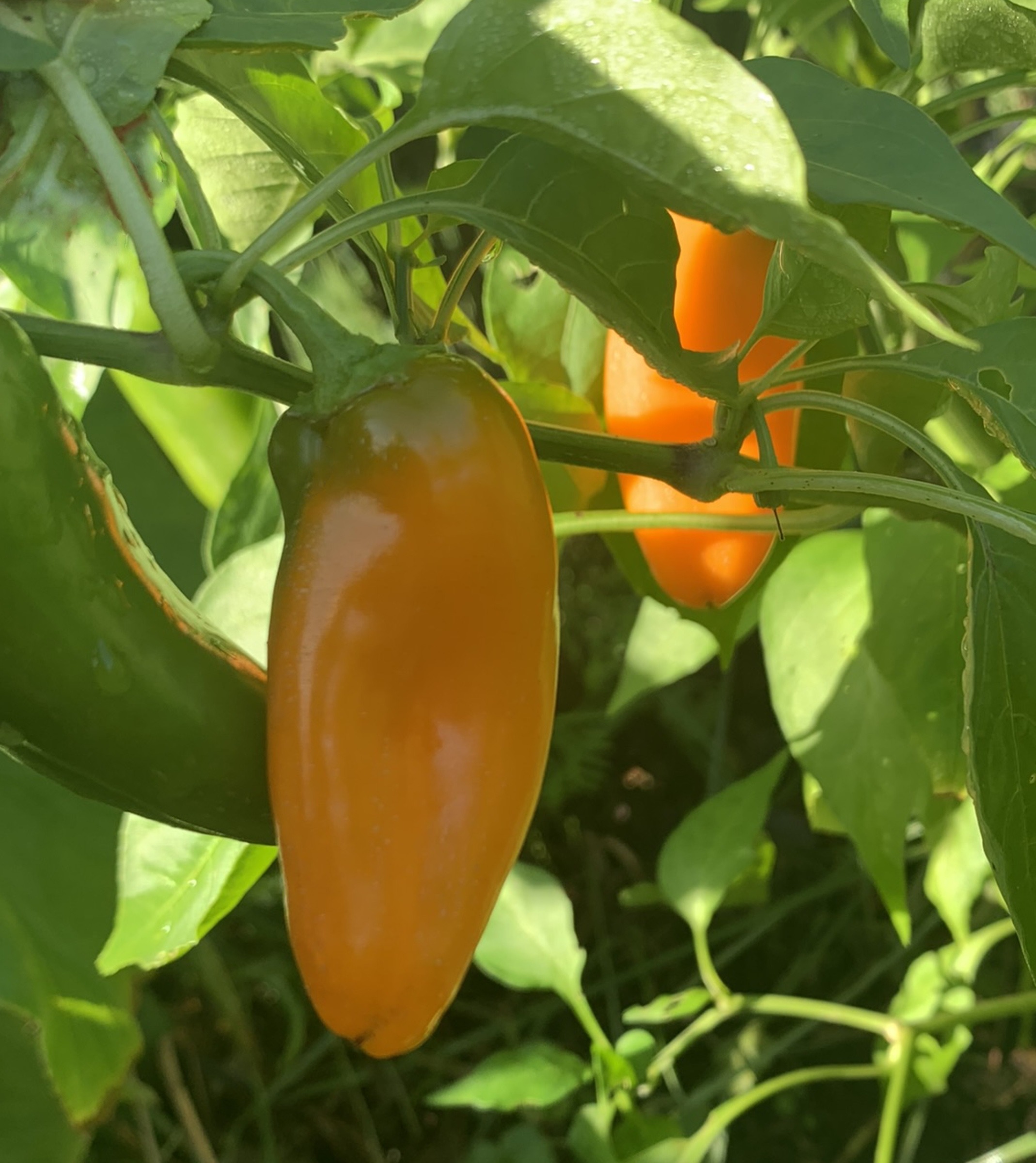
Picnic Orange pepper from saved seed
It’s also a way way to maintain an annual supply of seeds that seed companies never offer, so-called heirloom varieties that have been handed down for generations from parents to children and from neighbor to neighbor.
And, of course, it’s a way to save money.
One year, for instance, I grew a giant canning tomato from seeds given to me by a friend. Where did my friend get the seed? From another friend, who got it from another friend, who . . . well, you know where that person got it, etc.
What to Save
Heirloom seeds are from plants whose flowers self-pollinate. Hybrid seeds, in contrast, are produced when the pollen of one specially selected plant is made to fertilize the flowers of yet another specially selected plant. Hybrid plants often are more robust than their parents — they have so-called “hybrid vigor” and they are bred for very specific characteristics.
Each decade brings many new varieties of, for instance, hybrid corn into the market. In this case, yield is an important goal as is, for sweet corn, sweeter flavor.
Hybrid tomatoes, likewise, might be bred for higher yield, in addition to resistance to various diseases, cracking, or, perhaps, a rounder shape or more distinctive color.
But when it comes to flavor of vegetables and beauty of flowers, hybrid is not always “high-bred.” New varieties of sweetpeas have beautiful flowers, but they cannot match the intoxicating fragrance of an heirloom variety such as Painted Lady, which was introduced nearly two centuries ago.
The heirloom sweet corn variety, Golden Bantam corn, is not nearly as sweet as newer hybrids, but has much richer, cornier flavor and, to me, a better, chewier texture, something you can sink your teeth into. That’s not to say it’s for everyone. A friend of mine calls it “horse corn. No matter; as Liberty Hyde Bailey wrote in 1922 (in The Apple Tree) about apples can be more generally applied to other fruits and vegetables . . . “Why do we need so many kinds of apples? Because there are so many folks. A person has a right to gratify his legitimate tastes.” Since 1902, the year that Golden Bantam was first introduced, its been involved in a number of hybrids such as Golden Cross Bantam, Golden Giant, and Bancross.
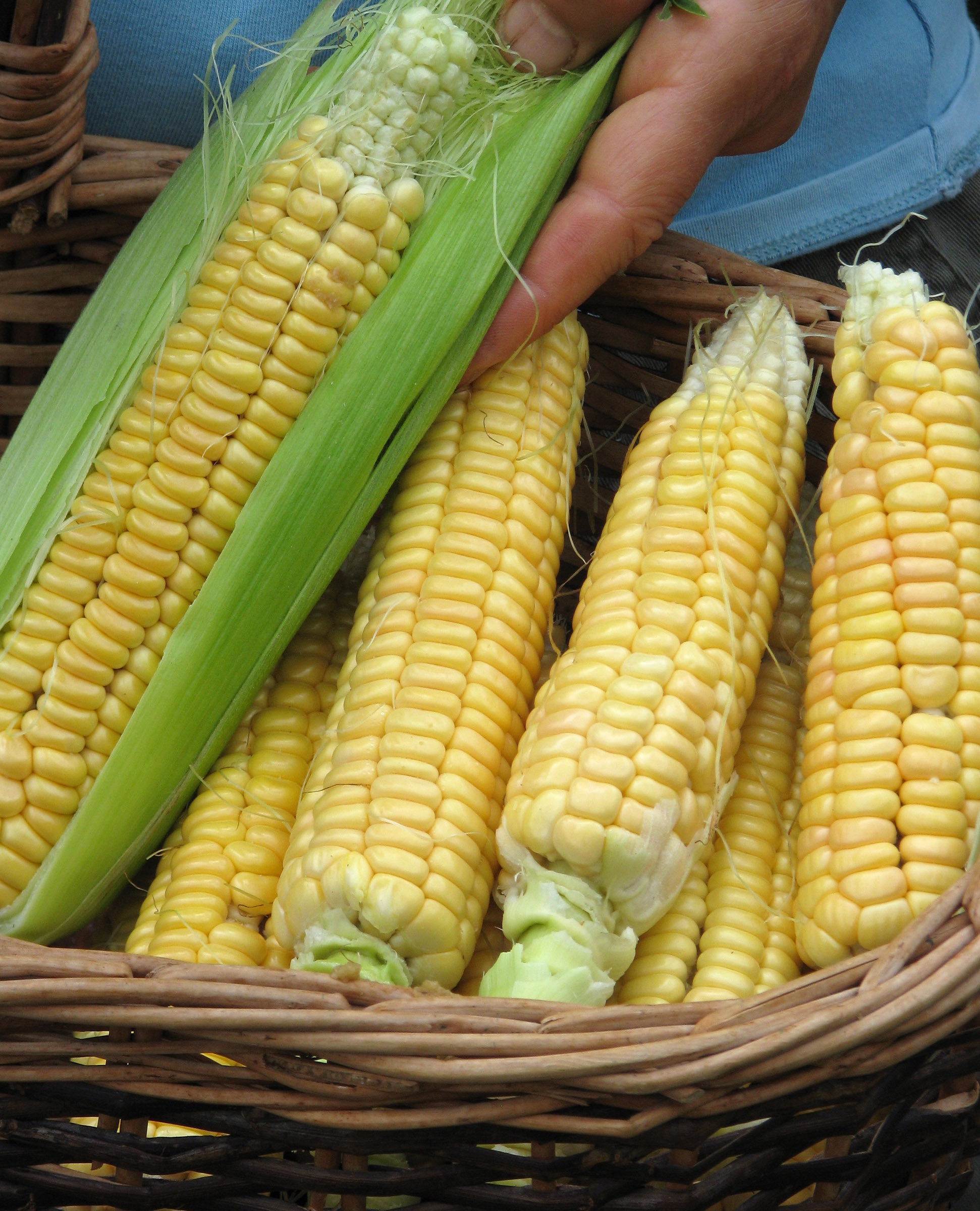
Golden Bantam corn
That same “horse corn” friend used to rent a house in Wisconsin surround by corn fields in which hybrid seed was being produced. The farmer supplied the household with all the sweet corn wanted as long as they didn’t grow backyard seet corn. Some of the pollen from the backyard corn’s pollen would have wafted onto surrounding fields, pollinating those plants and contaminating the seed.
Every year I save seed from such plants as Shirofuma edamame, Dutch Butter popcorn, Picnic Orange pepper, and Lemon Gem marigold because it’s so easy, and from Sweet Italia pepper seeds, in this case because they’re so hard to find for sale.
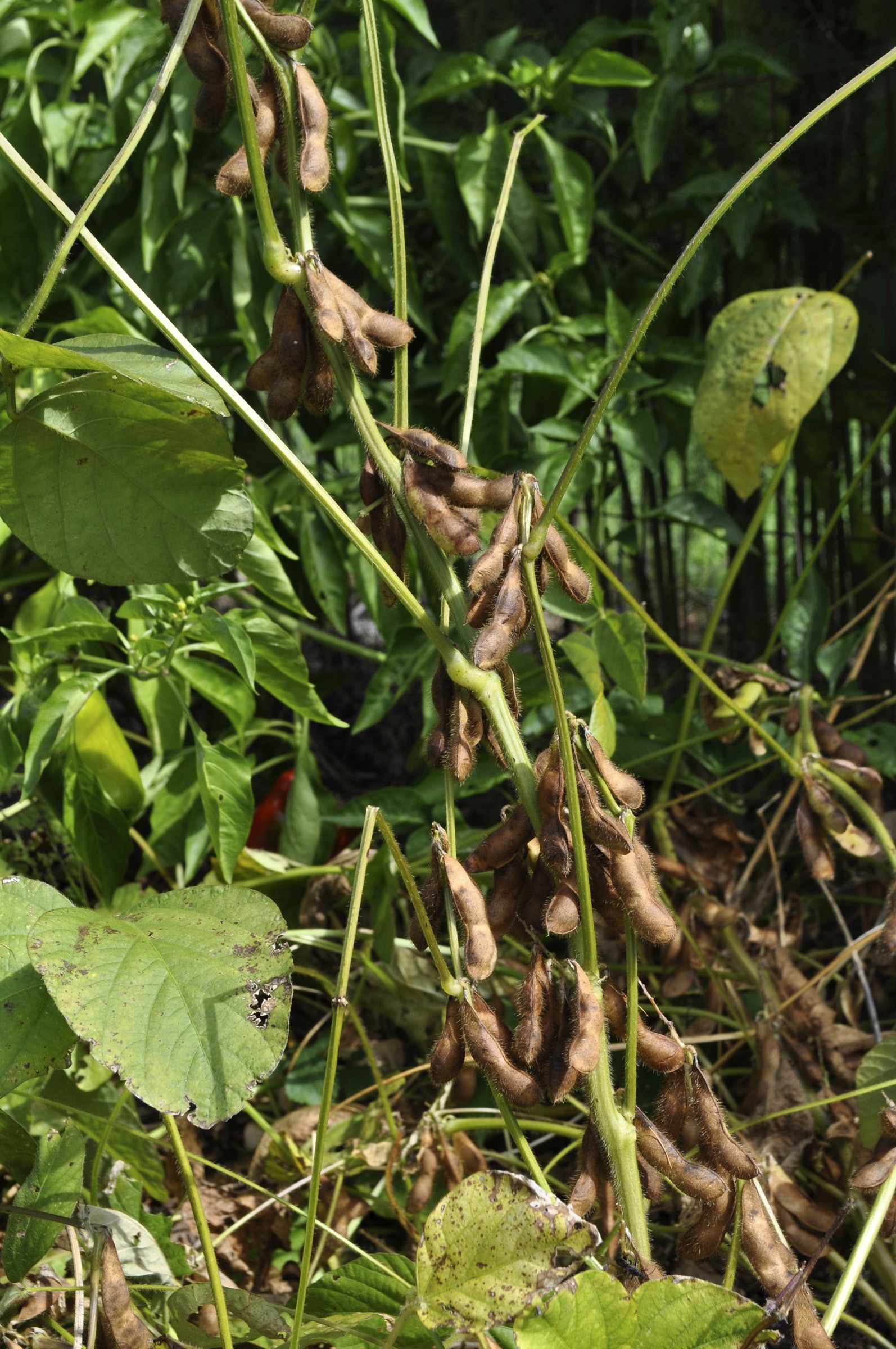
Edemame ready for seed harvest
What Not to Save
Seeds won’t come true from hybrid plants. Take the seeds out of a hybrid tomato, such as Big Boy, and you won’t get Big Boy fruits on those plants next year. So you must purchase seeds of hybrid varieties.
That said, one year I did, on a lark, plant seeds of the delectable hybrid cherry tomato Sungold. Surprisingly, the fruits were almost identical to those on neighboring plants raised from hybrid seeds. And thankfully so, because Sungold seed is occasionally in short supply from seed companies; if my nonhybrid plants produced nearly the same fruits year after year, I wouldn’t have to worry about not being able to buy the seed. Still, I have to admit that a side by side taste definitely tipped the scales in favor of Sungold.
Some Details
If you choose to save seeds from your own garden plants, select plants that are healthy. Let fruits or flowers mature, whether they are the dry pods of lettuce or radish plants, the juicy fruits of tomato or cucumber plants, or the dry seed heads of marigolds or zinnias. You can take a few seeds out of tomatoes as you eat them, but a mature cucumber with ripe seeds is unfit to eat. Rinse well, then dry the seeds from juicy plants.
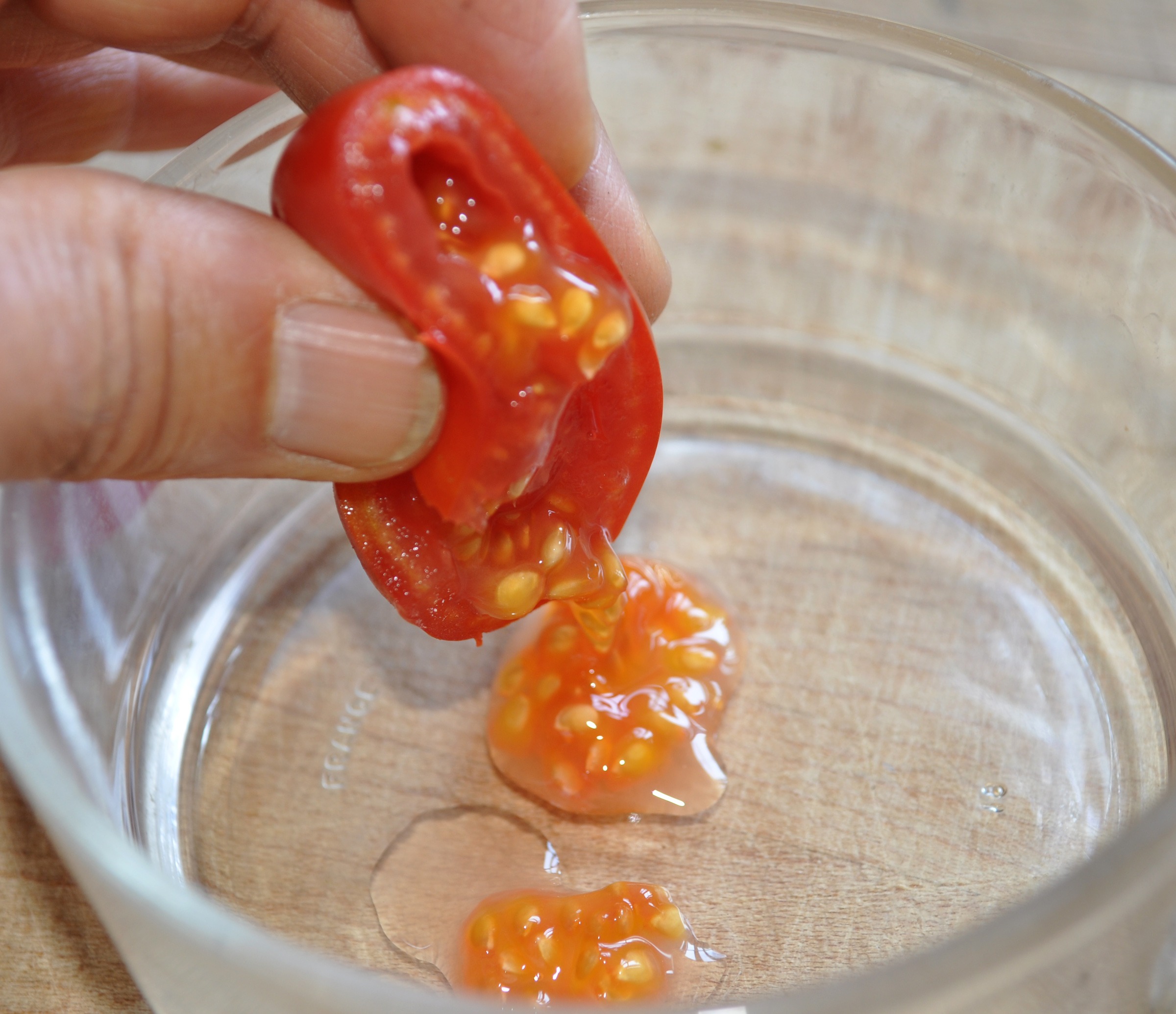
First step in collecting tomato seed
No need to do anything with the dry seeds you pop out of radish pods or rub from the heads of marigolds or daisies, except to pack them away.
What kinds of plants you end up growing next year will depend on whether the seeds you collect are from hybrid plants, and whether the seeds were from flowers that were self-pollinated or cross-pollinated. Cucumbers, for example, have separate male and female flowers, so readily cross-pollinate.
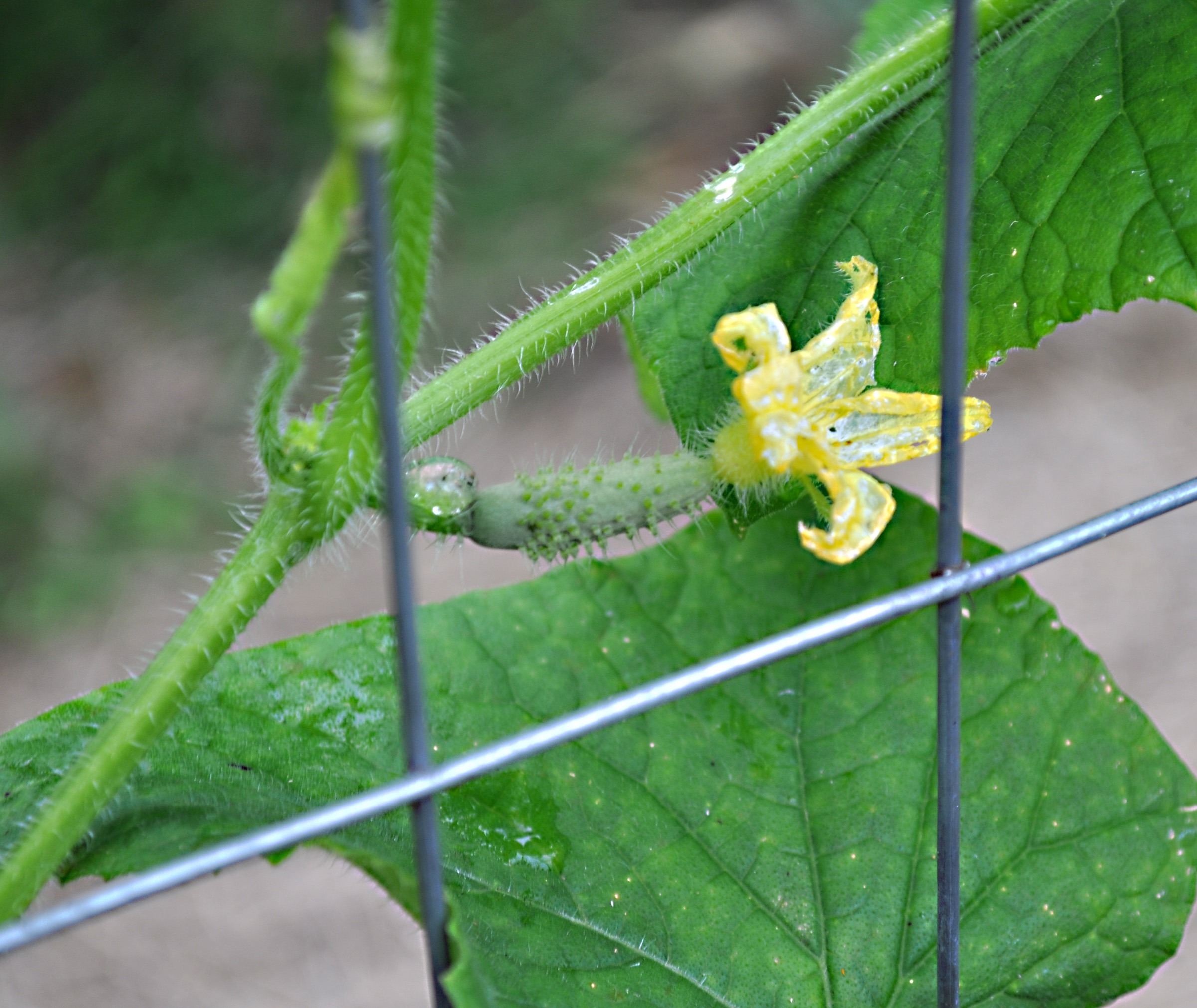
Female cucumber flower
Propagate heirloom cucumber varieties by preventing cross-pollination; either grow them in isolation from other cucumbers or else bag and hand-pollinate a few female flowers with male flowers on the same plant.
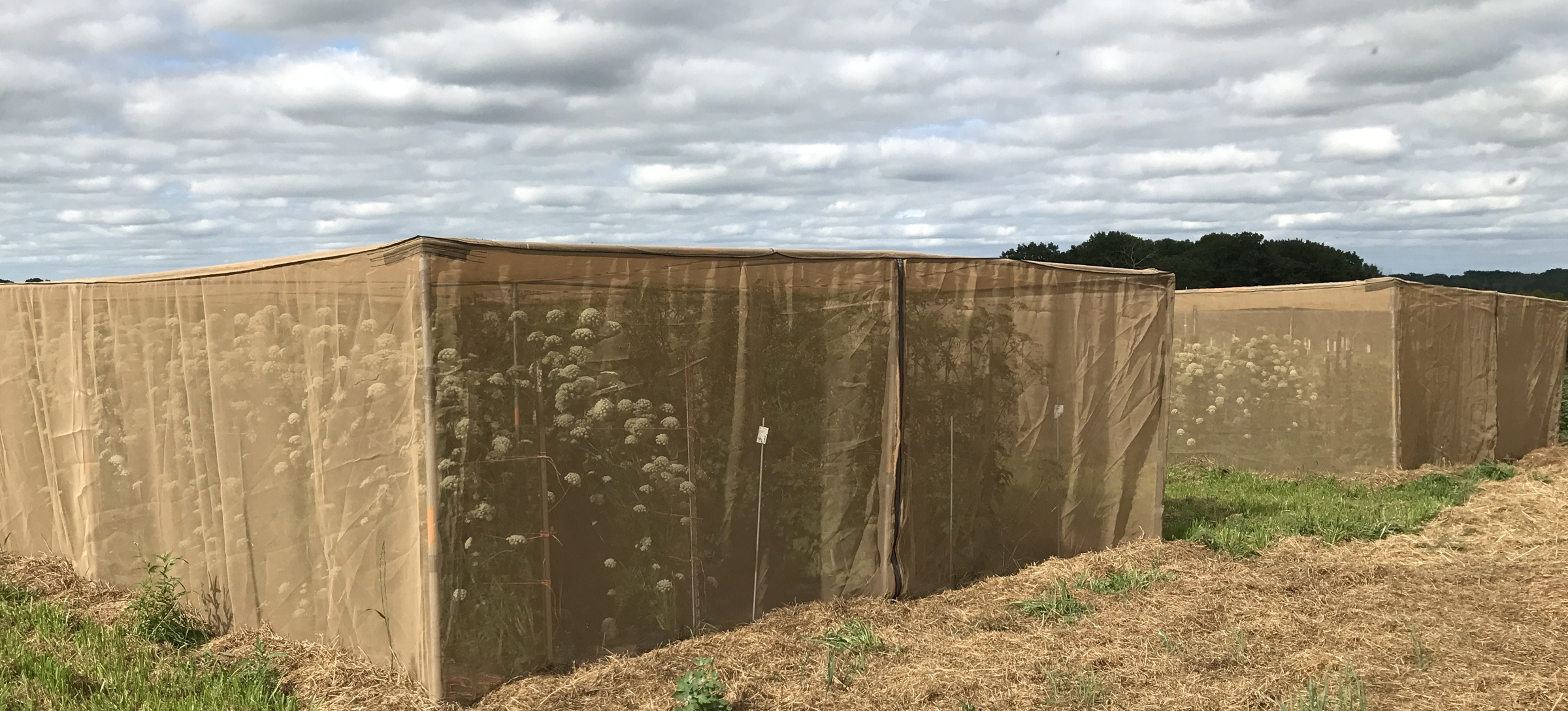
Cages at Seedsavers Exchange for preventing cross-pollination
The most predictable outcomes when saving flower and vegetable seeds will be with those taken from nonhybrid plants that have not cross-pollinated or do not do so readily — like heirloom varieties of peppers and most tomatoes. (Potato-leaf varieties of tomatoes do frequently cross-pollinate.) Expect some interesting results with the others.


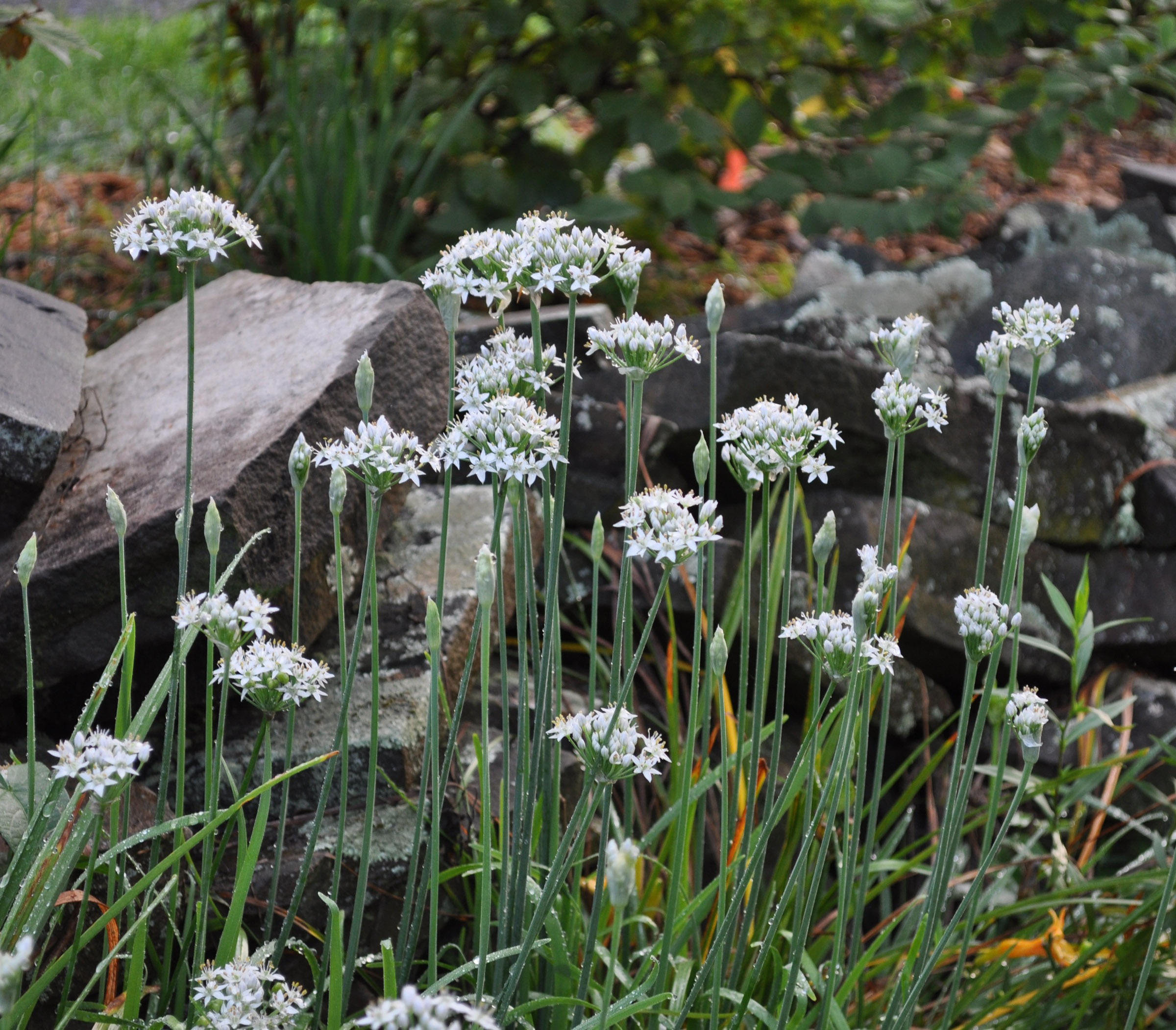

Very much enjoyed the conversation and photos. Interestingly I had the same experience with Sungold — although the 2nd year they came up as volunteer plants in a sheltered area (‘five’ in our normally ‘4’ Minnesota garden). When they ‘volunteered’ for the third year, however, the fruit was definitely smaller and less sweet than their original parent plant. This past spring I found three old original Sungold seeds and planted them in the ground. Only one came up but it is producing well now, late in the season, and definitely outshines the nursery variety of ‘something Gold’.
Seeds Saving! ~ YES this is a wonderful way to honor nature and to keep diversity alive!
I don’t think I’ll save any seeds from my heirloom paste tomatoes from my garden this year. I only have an 18’x18′ garden and my 2 varieties of paste tomatoes (Amish Paste and Super Italian Paste) are kind of rubbing elbows. Looking at some of the fruits, I think they may have done a little crossbreeding.
I beg to differ about your opinion on mature cucumbers with ripe seeds being unfit to eat. I make Russian Bear Pickles out of the big, fat, yellow with tinges of brown cucumbers. They have a taste and texture of the pickled watermelon rind we used to have on the relish tray during the Thanksgiving and Christmas dinners when I was kid growing up in the 1960’s. I have to specify 1960’s because my wonderful children will chime in with “THE 1860’s?”, if I just say the 60’s.
Any cross-pollination this season would affect the seeds within the fruits but not the fruits themselves.
Well, at least your kids didn’t say 1760s!!
Ah, I didn’t really think about it only affecting the seeds. Still, I probably won’t save those as I still have plenty of the original source. I just didn’t realize that Amish Paste would set 10-11 ounce fruits. They’re bigger than baseballs.